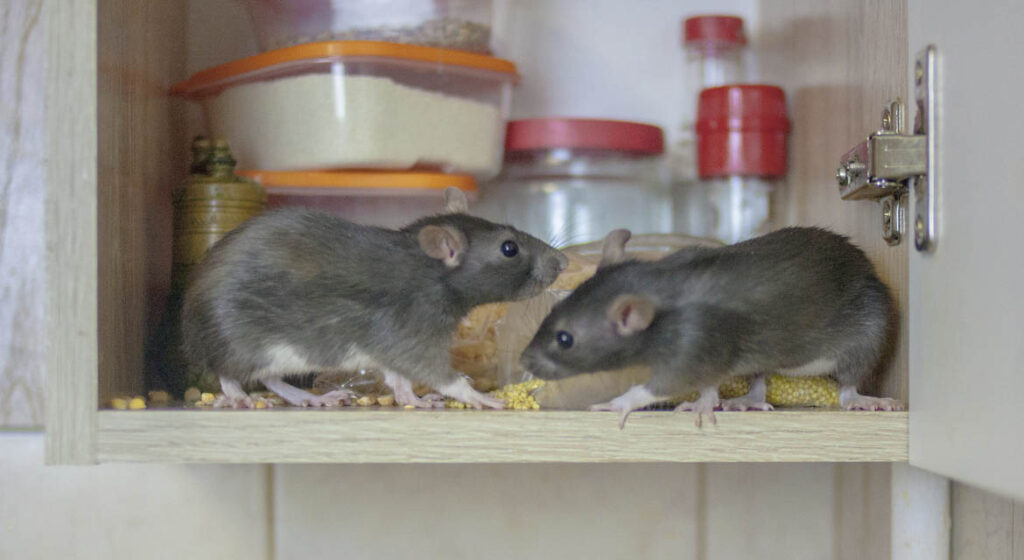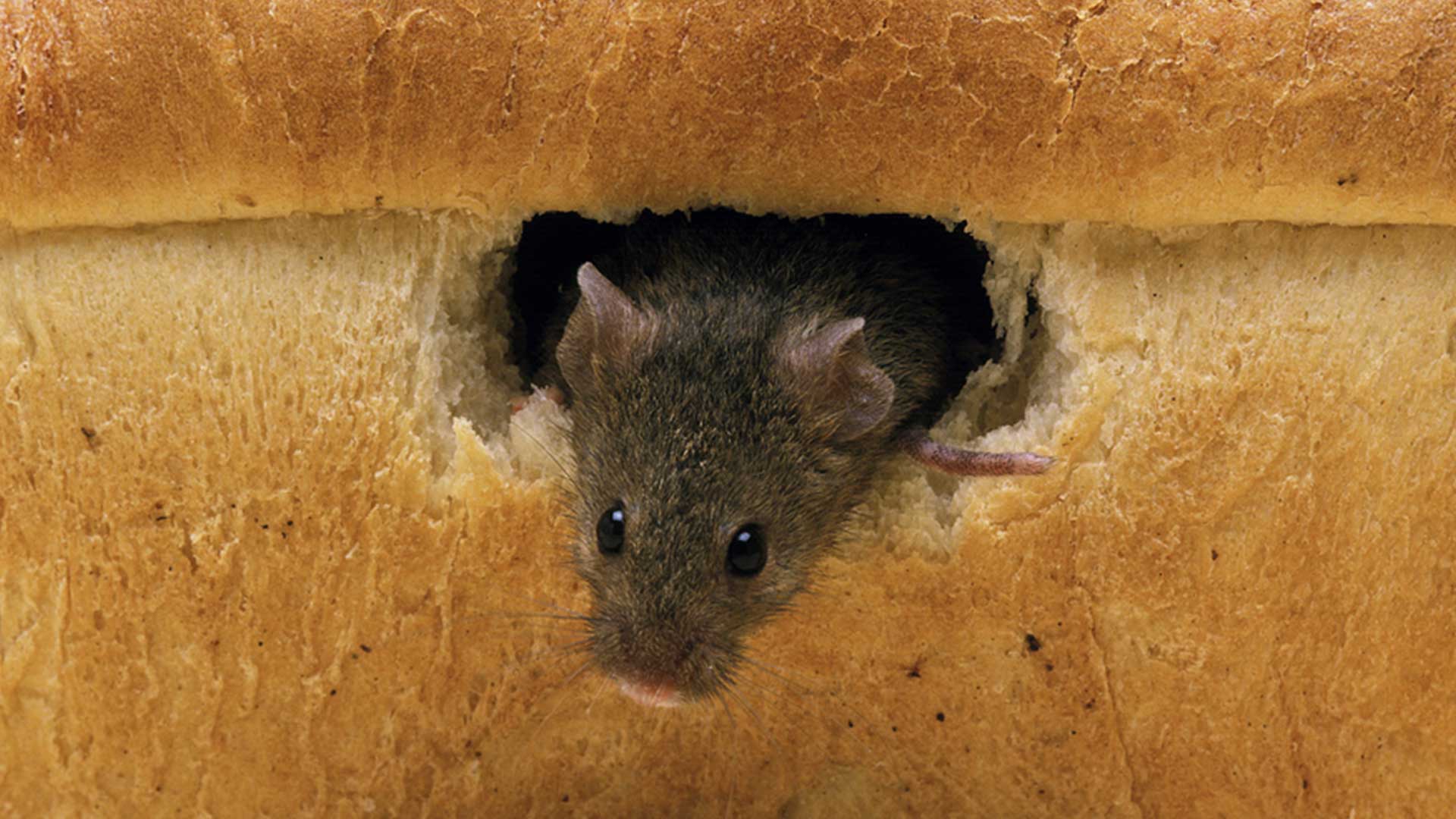
Understanding Mouse Infestations in Your Home
Have you been hearing strange noises at night? Have you noticed small droppings or gnaw marks around your home? If so, you may be dealing with a mouse infestation. You need to address this right away, as mice can cause damage to your home and belongings and carry diseases that can harm you and your family. Here are three key points to understanding a mouse infestation:
- Look out for signs of mouse infestation, including droppings, gnaw marks, nesting materials, and the presence of mice, to determine the extent of the problem.
- Be aware of the health risks posed by mice, as they can spread diseases through their droppings and urine, and the potential property damage they can cause by chewing on wires and household items.
- Take preventive measures such as sealing entry points, maintaining cleanliness, and implementing traps or baits to prevent and eliminate mouse infestations, seeking professional help if needed.
Consequences of a Mouse Infestation
Contrary to popular belief, mouse infestations can happen in any home, regardless of how clean it is. These pesky rodents are attracted to warmth and shelter, making our homes the perfect place for them to thrive.
Mice have teeth that never stop growing, which means they need to constantly gnaw on things to keep them trimmed down. This can lead to chewed wires or even structural damage if left unchecked.
In addition to damaging property, mice can carry diseases such as hantavirus and salmonella. Exposure to these diseases can occur through contact with their droppings or urine, putting you and your family at risk of illness.
If you suspect that you have a mouse infestation in your home, it’s best to seek professional pest control services like Truly Nolen. DIY methods may be ineffective and can make the situation worse by causing mice to scatter throughout your home.
Signs of a Mouse Infestation
Knowing the signs of a mouse infestation to look out for can help you identify a problem before it gets out of hand.
Scratching Sounds in Walls or Ceilings
One of the first signs of a mouse infestation is scratching sounds coming from walls or ceilings. When mice move around in your home or workplace, they make noise by scratching on surfaces. If you hear these sounds regularly, especially at night when mice are most active, you may have an infestation.
Greasy Marks along Walls or Baseboards
Mice tend to follow the same paths repeatedly. Over time their fur rubs against walls and baseboards leaving greasy marks behind. These marks are often visible near entry points such as doors and window sills.

Truly Nolen GUARANTEE
If you’re not completely satisfied, you’ll get a full refund on your most recent service with our 100% money back guarantee.

$50 Off Year Round Pest Control
Truly Nolen is a family-owned company with 85 years of experience providing the best pest control. If you’re not completely satisfied, you’ll get a full refund on your most recent service with our 100% money back guarantee.
Holes in Walls or Floors
Mice are excellent climbers and can squeeze through tiny gaps and holes to enter buildings. They typically use these holes as entry and exit points when searching for food and shelter. Look out for small holes in walls or floors as they may indicate mouse activity.
Mouse Droppings and Urine Stains
Mouse droppings are small, black pellets usually found near areas where food is stored or consumed such as kitchens and pantries. Rodent urine has a strong odor that is easily identifiable even without seeing it directly. Look out for yellowish-brown stains on floors or surfaces which could indicate rodent urine.
Tracks
Mice leave footprints behind wherever they go. Their tracks are often visible on dusty surfaces like those in attics and basements. These tracks can help you identify the location of the infestation.
Smells
Mice have a distinctive musty smell that you can easily identify in enclosed spaces like cupboards and closets. If you notice an unpleasant odor, especially near food storage areas, it could indicate an infestation.
Noises
Mice are active at night and make a variety of noises such as squeaking, gnawing, and scurrying. If you hear these sounds regularly, especially at night, you may have an infestation.
Pet Behavior
If your pet is acting unusually excited or aggressive towards certain areas of your home or workplace, it could indicate the presence of mice. Dogs and cats have keen senses of smell and hearing that allow them to detect rodents even before they become visible.
Determining the Extent of the Mouse Infestation
Finding and identifying mouse nests can give you an idea of how many mice are in your home. Here are some tips for finding nests and assessing the severity of the infestation.
Look for Shredded Paper or Fabric
Mice build their nests out of soft materials like paper, fabric, and insulation. Look for piles of shredded material in hidden areas like closets, cabinets, and drawers. These piles may be difficult to spot at first glance, but if you look closely, you may notice small bits of paper or fabric sticking out from behind other objects.
Check for Small Holes
Mice often enter homes through small holes in walls or baseboards. Once inside, they may create additional holes to move around more easily. Check your walls and baseboards carefully for signs of damage or holes that mice could use as entry points.
Inspect Dark and Quiet Areas
Mice prefer dark and quiet areas where they can build their nests undisturbed. This means that attics, basements, crawl spaces, and other secluded areas are prime locations. Use a flashlight to inspect these areas for signs of nesting activity.
Look for Droppings
Mouse droppings can give you a good idea of how many mice are in your home. If you find large amounts of droppings near a nest site, this could indicate a larger infestation than if there were only a few droppings present.
Use a Flashlight to Search for Nests
Some mouse nests may be difficult to spot without a closer look. Use a flashlight to search for nests in hard-to-reach areas like behind appliances, inside walls, and in crawl spaces. Look for small openings or gaps that mice could use as entry points.
How Many Mice is Considered an Infestation?
If you see one mouse in your house, it’s likely that there are more of them hiding somewhere. A female mouse can give birth to 6 to 10 litters per year with 5 to 6 mice in each litter. Therefore, if you see multiple mice in your house, it’s considered an infestation.
What to Do about a Mouse Infestation
If you’ve noticed signs of a mouse infestation such as droppings, gnaw marks, and shredded paper or furniture, you likely have a rodent problem. Here’s what you should do.
Seal All Possible Entry Points
Once you have confirmed that you have a mouse infestation in your house, the next step is to seal all possible entry points in walls, drawers, and holes to prevent rodents from entering your house. Mice can fit through very small gaps and holes in walls and floors, so seal them up with steel wool or caulk. Make sure there are no gaps around pipes or cables and ensure that doors do not have gaps at the bottom.
Take Immediate Action When You Find a Dead Mouse or Rat
If you find a dead mouse or rat in your home, take immediate action to avoid attracting other pests and prevent damage. Wear gloves when handling dead rodents as they may carry harmful bacteria and viruses.
To dispose of dead rodents safely:
- Pick up the dead rodent using gloves.
- Put the rodent into a plastic bag.
- Tie the bag tightly.
- Place the bag into another plastic bag.
- Tie this second bag tightly.
- Dispose of both bags in an outdoor trash can with a tight-fitting lid.
When to Hire a Pest Control Professional
If you’ve tried preventing rodent activity but still find evidence of a mouse infestation, it’s time to call in the experts. A Truly Nolen professional can help determine the extent of the problem by locating nests and entry points that may not be visible or accessible.
Removing mice from your home can be dangerous if not done correctly. Truly Nolen has the knowledge and experience to safely handle toxic chemicals and set traps without harming humans or pets.
Hiring a Truly Nolen professional can save you time and money in the long run. They can provide effective solutions tailored to your specific needs, preventing future infestations and costly damages caused by rodents.
Don’t wait until the problem gets out of hand. If you suspect a mouse infestation in your home, contact Truly Nolen as soon as possible for proper assessment and removal. Remember, taking action against a mouse infestation early on is key to protecting your health and property.

$50 Off Year Round Pest Control
Truly Nolen is a family-owned company with 85 years of experience providing the best pest control. If you’re not completely satisfied, you’ll get a full refund on your most recent service with our 100% money back guarantee.
Frequently Asked Questions
How do I know if I have a mouse infestation?
Signs of a mouse infestation include droppings, gnaw marks on food packaging or structures, evidence of nesting materials, scampering or squeaking sounds at night, and sightings of live or dead mice. An inspection by a pest control professional can help confirm the presence of mice. Learn more about mice
Are mice dangerous?
Mice can pose various risks. They can contaminate food with their droppings and urine, spread diseases such as salmonella and hantavirus, cause damage to structures and belongings through gnawing, and trigger allergies and asthma symptoms in some individuals. Learn More!
How do I prevent mice from entering my home?
Preventive measures include sealing any gaps or cracks in the building’s exterior, installing door sweeps and weatherstripping, keeping food stored in sealed containers, regularly cleaning up food crumbs and spills, and maintaining proper sanitation practices.
Can I get rid of mice on my own?
While DIY mouse control methods may be effective for small infestations, severe or recurring infestations often require professional assistance. Pest control professionals have the knowledge, tools, and experience to effectively eliminate mice and implement preventive measures.
How long does it take to get rid of a mouse infestation?
The duration of mouse control depends on various factors, including the size of the infestation, the accessibility of nesting areas, and the effectiveness of control measures. It typically takes a few weeks to eliminate an infestation completely, but regular monitoring and ongoing preventive efforts are necessary to ensure long-term control.

